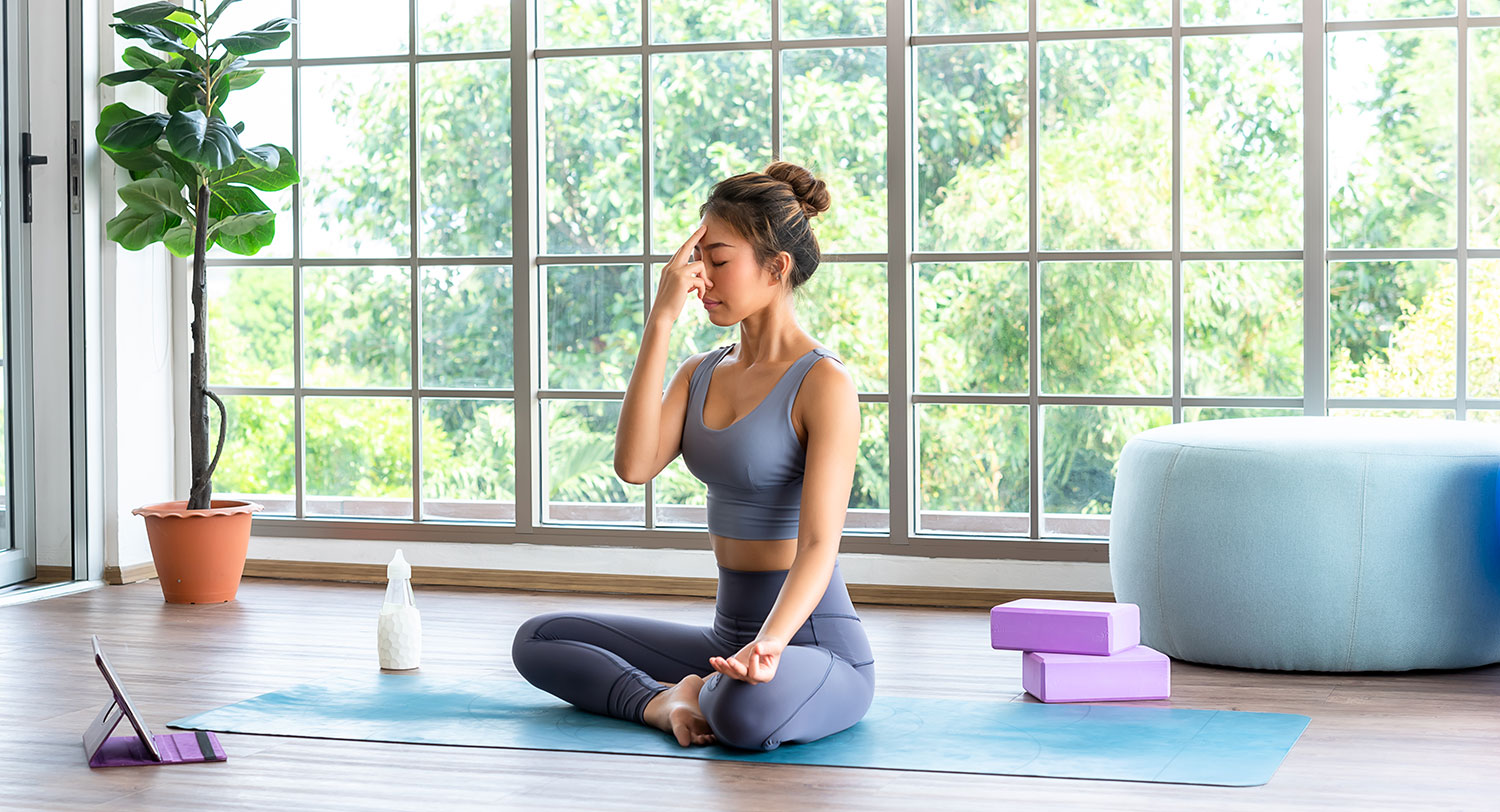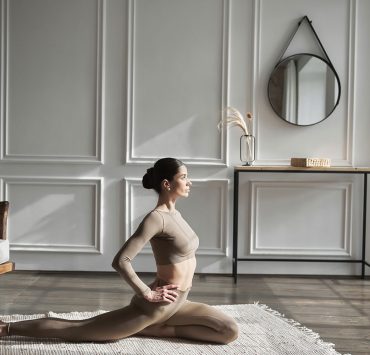
Yoga, meditation, and spirituality are at the top of the…
The transformation that comes with yoga doesn’t happen in an instant. Yoga is a complex practice that has many layers to be explored and experienced. The journey lasts a lifetime, and the benefits will unfold slowly, but steadily if you continue to dedicate yourself to the practice. While a yoga practice isn’t without its challenges, if you fully embrace the journey, it can be life-changing for your body, mind, and spirit. These facts may not be easy to hear, but learning them can help you better approach your practice and journey in yoga.
You Need A Consistent Practice To Fully Benefit

Hitting the mat at the studio or at home every once in a while is a great way to get a work out in. However, if you truly want to reap the full benefits of a yoga practice, you will need to truly dedicate yourself to it regularly. Yoga has incredible benefits for the mind and body: it increases focus, helps ward off symptoms of depression, boosts metabolism, improves posture, reduces back pain, and much more. If you want to benefit from all that yoga has to offer, you need to find ways to incorporate it into your regular physical work out routine—ideally on a daily basis.
There Is More To Yoga Than Mastering The Peak Pose

When people think of yoga, they often come up with images of a person masterfully performing vrischikasana or adho mukha svanasana. In reality, the asana practice is only a small portion of the full scope of yoga.
In fact, it is only one section of the eight limbs of yoga. A brief explanation of the limbs are:
Yamas: The Rules of Moral Code

Niyamas: The rules of personal behavior.
Asana: The postures and the mastery of keeping the body still during meditation.
Pranayama: Yogic breathing techniques and control of prana, the life force.
Pratyahara: The withdrawal of senses.
Dharana: Concentration.
Dhyana: Meditation.
Samadhi: The merging with the divine.
The asana practice is a wonderful way to familiarize yourself with the world of yoga, and in western culture, it is often the first point of introduction. However, if you truly want to experience the entire practice, it is important to look into all limbs.
The Study Of Yoga Expands Beyond The Studio

If you have a regular practice, you’ve likely heard teachers share snippets of wisdom from books or Indian philosophy. This is a wonderful look into the wisdom of yoga, but to dedicate yourself to the practice, you’ll need to do some of the heavy lifting on your own time. Check out a classic yoga book, like The Yoga Sutras of Patanjali, which outlines yoga teachings, or do some internet research on important figures in the yoga world. There is a wealth of knowledge to learn on the history and wisdom, and by doing your own research, you will be able to expand your mind immensely.
Only You Can Push Yourself To The Next Level

Sure, teachers can motivate and inspire you to go for the next level, but only you can decide when to actually go for it and push yourself further. In an asana practice, it is easy to get stuck in a rut of complacency. We may choose not to go for a certain pose simply because we have put ourselves in a cycle of avoiding it because it seems too challenging. Sometimes, you need to take a step back, look at your practice, and decide where and when you can push yourself further (and out of that rut).
…And Only You Will Know When To Take A Step Back

On the same note, no instructor will know exactly what is going on in your body—all they know is how to perform the pose safely, and the precautions and adjustments that can be made for a pose. You need to be the advocate for your own well-being, and only choose to do a pose when you feel you are in good health to do so. If something doesn’t feel right, you need to listen to your body and take a step back to avoid any injuries.
There Will Be Some Days When You Nail Every Pose, And Some When You Can Barely Seem To Keep Your Focus In The Room

Your progress with yoga won’t be a steady incline towards perfection—there will be ups and downs. Yoga is a journey. There will be some classes where you will feel like you are at the peak of your game, and then the next day you’ll feel like you are barely able to keep up. Enjoy the ride, and take it as a chance to learn from both your successes and defeats.
Pranayama Doesn’t Just Mean Breathing Deeply

There is a lot more to pranayama than just paying attention to your breath. Pranayama, which as mentioned is one of the eight limbs of yoga, encompasses a wealth of yogic breathing techniques that help you take your practice deeper. The Sanskrit word is often translated to mean “mastery of the life force.” These breathing techniques have many purposes and benefits, but they are commonly used to increase energy, release stress, improve physical well-being, and enhance mental clarity. Pranayama is a powerful tool, and it is equally as important as the asana practice—and the other eight limbs.
Your Yoga Practice Doesn’t Stop Once You Step Out Of The Studio

Many yoga practitioners leave their practice at the door of the studio, but your yoga practice should integrate into all areas of your life. Without even realizing it, you will likely start reacting to the world in a different, more mindful manner. You can take this a step further by consciously choosing to apply the wisdom and strength you’ve built in class to your everyday life and interactions.
You Do Have Enough Time To Practice Today

It is easy to make up excuses for not practicing, but the reality is you can make the time to practice if you want to. You don’t need to go to a class at the studio every day if it isn’t accessible for you, but you do have the ability to practice at home, on your own time. Even just dedicating 15 minutes to quieting your mind and getting into a yoga flow in your bedroom will help you feel more connected and grounded in your practice. If you find it difficult to do a practice on your own, find a teacher on YouTube who you connect with who can guide you through a class in the comfort of your own home.
You Don’t Need To Be Insanely Flexible To Have A Successful And Fulfilling Practice

Sure, it looks pretty cool when you can reach your toes above your head in natarajasana or bring your forehead to your knees in paschimottanasana, but that isn’t the true purpose of yoga. In terms of the poses, it is about doing the physical movement that feels right to you, in a manner that best suits your body. The success of your practice isn’t dependant on whether you can touch your toes or not.
Comparing Your Practice To Others Won’t Get You Any Further

It is super easy to get distracted by other people in your yoga class. Feelings of jealousy and frustration can come to the surface when you start comparing yourself to someone who is seemingly “further along” in their practice than you are. However, when it comes down to it, you don’t truly know where they are in their practice—and it shouldn’t matter to you! Yoga is a personal journey, and you should focus on your own path and progress, rather than that of others.
Savasana Isn’t Just A Cat Nap, And You Should Never Skip It

Some people decide early on in their practice that savasana isn’t really their “thing,” and choose to skip out of class before the pose. Besides the fact that this can be distracting to others, you are only doing yourself a disservice by not including it in your practice. Savasana may look like a simple pose, but it is actually one of the most challenging postures one can do—and also one of the most rewarding. It is a meditative pose that requires you to let go of control of your mind, and gives restoration to both the mind and the body. Even if you find the pose challenging, fight the urge to leave and let yourself sink into the posture. You may be surprised by what you find!
Resistance To A Pose Probably Means It Is What You Need To Work On The Most

We all have that pose that we don’t like—the one that makes us groan when the teacher cues it. It’s likely the pose that you begrudgingly do in class when the teacher instructs it, but would never dream of including it in your home practice. However, when you feel resistance towards a pose, it is likely a sign that you actually should work on it the most. You may have a physical or mental block that could truly benefit from practicing the pose and working through the resistance.
It Is Hard To Step Away From Yoga

Once you find the momentum in your practice and start seeing both the mental and physical benefits, it is hard to leave it behind. For most people, once a yoga practice is started, it is one that will continue for the rest of their lives. It may look different at different stages of your life—at one point you may get really into hot yoga, or at another you may find yourself in a Kundalini phase—but the overarching practice will likely always be a constant force.
You Never Stop Learning

There isn’t one point that you reach where you are suddenly a master of yoga. The practice of yoga is a never ending journey of exploration and learning. The point isn’t to reach the final phase of your yoga practice. You are meant to keep gaining new wisdom, exploring new concepts, and pushing your physical, emotional, and mental hurdles.
Yoga is a complex practice that can be transformative. While you may never truly “master” the practice, a practice in yoga is an incredible journey that will take you down different paths to explore towards wisdom to integrate into your life.
What's Your Reaction?
Yoga, meditation, and spirituality are at the top of the list for writer and former nutritionist Amanda Carter. This devoted practitioner enjoys writing about health and wellness just as much as she enjoys living it.














